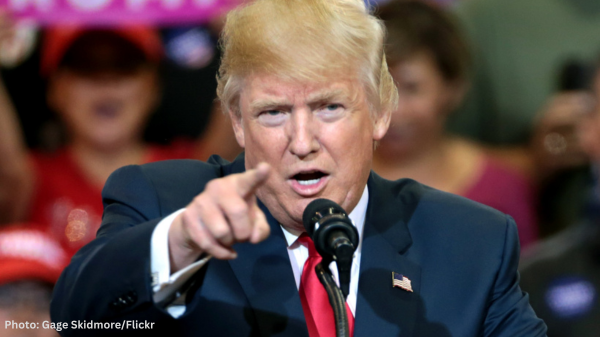Four weeks after former President Donald Trump’s conviction in a much-criticized Manhattan prosecution and a week before the first and earliest-ever scheduled post-primary presidential debate, it’s a good time to look at how these two unusually elderly and oft-reviled candidates stand in the contest.
The big news is that there isn’t much big news. Trump’s lead over President Joe Biden in the RealClearPolitics average of recent polls was 0.9 percentage points when the verdict was handed down and 0.8 points as this is written. With Robert F. Kennedy Jr. and other candidates included, Trump’s lead over Biden increased from 2.2 points to 2.4.
In other words, no perceptible change. As Republican pollster Patrick Ruffini posts, contrary to interest, there is a “very real possibility that there will be very little of substance to talk about polling wise before Election Day.”
But there is a sharp change in poll numbers from the 2016 and 2020 cycles. During those races, Trump trailed Hillary Clinton for all but a couple of days and Biden for every single day in the 12 months before the election. On June 20 of those years, Clinton’s lead was 5.9 points and Biden’s 9.5 points, respectively.
Trump’s prospects this year look even better when you look at the polling in target states. RCP polling averages have him ahead by around 5 points in Arizona, Georgia and Nevada — states he lost narrowly in 2020. If you add their 33 electoral votes to the 235 electoral votes in states Trump carried that year, you get 268 — just short of the necessary 270.
At the moment, these numbers look baked in. Biden hasn’t led in any poll in Arizona since April 2023, in Nevada since Oct. 2023, and in Georgia since Nov. 2023.
Moreover, the numbers here are consistent with national polling showing increased Trump support from non-college-graduate Hispanics and Blacks. The 2020 exit polls reported that 19% of voters in Arizona and 17% in Nevada were Hispanic and that 29% of voters in Georgia were Black.
If you add the single electoral vote of Nebraska’s 2nd Congressional District, which Biden won 52%-45% in 2020, and where sparse polling suggests a closer race, you have a 269-269 tie, to be broken in the House of Representatives, with each state’s delegation getting one vote. Republicans have 26 delegations and Democrats 22, with two evenly split, with the likeliest change being a GOP gain of North Carolina because of redistricting.
So an Electoral College tie probably means a second Trump term. So, too, would a Trump plurality in Pennsylvania, which he carried by 0.7 points in 2016 and lost by 1.2 points in 2020. The former president leads by 2.3 points in recent Pennsylvania polls, and Biden has led in no Pennsylvania polls in three months and in only four of 23 this year.
Pennsylvania’s not anyone’s sure thing. But a fine-grained analysis by The Wall Street Journal’s liberal columnist William Galston provides reasons for taking these Keystone State poll numbers seriously.
Trump has other possibilities. He has microscopic leads in Michigan and Wisconsin, which he carried in 2016 and lost in 2020. He ran even with Biden in two recent polls in Virginia (Biden +10 in 2020) and just 2 and 4 points behind in Maine (Biden +9 in 2020) and Minnesota (Biden +7 in 2020). Even more startling polls, which show Biden ahead by just 6 points in New York (Biden +23 in 2020) and Hawaii (Biden +29 in 2020), suggest a particularly strong swing toward Trump among non-college Hispanics and Asians.
Those last results may turn out to be outliers, but if Biden’s support collapses this fall as former President Jimmy Carter’s did in 1980, they’ll look like harbingers. It’s harder to imagine Trump’s support plunging after it has persisted despite multiple prosecutions and a guilty verdict.
Let me conclude with the usual caution that poll numbers are subject to error and change — and with a novel theory to help explain how a Trump defeat could be followed by a Biden defeat in a rematch four years later. The theory is that both the 45th and 46th presidents have given voters good reasons to be reluctant to give either one an eight-year presidency. Shaking things up makes more sense.
The corollary is that an electorate that was willing to reelect, with just 49.2%, 50.7% and 51.1% of the popular vote, Bill Clinton, George W. Bush and Barack Obama while they were in their 50s was not willing to do the same for either Trump at 74 or looks unwilling to do the same for Biden at 81. We’ll see how that theory stands up on Nov. 6.
Michael Barone is a senior political analyst for the Washington Examiner, resident fellow at the American Enterprise Institute and longtime co-author of The Almanac of American Politics. His new book, “Mental Maps of the Founders: How Geographic Imagination Guided America’s Revolutionary Leaders,” is now available.
COPYRIGHT 2024 CREATORS.COM
For more great content from Rights, Justice & Culture News.
For more from The Heartland Institute.






